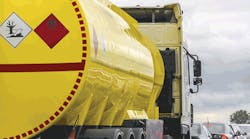I was visiting a small, long-standing U.S. factory, tucked into an industrial area in a booming West Coast city.
Signs posted in the fabrication and office spaces diligently reminded employees to wear ear plugs and safety glasses. Everyone was proudly in compliance. What stunned me was that the factory was generating alarming amounts of plastic microdust and PVC vapors in the manufacturing process with a complete lack of proper ventilation and containment for those within. Workers were being overwhelmingly exposed to these pollutants and were tracking microplastic everywhere. Someone mentioned off-handedly that the employees working closest to the PVC vapors were frequently out ill.
With the exception of asbestos, occupational health and safety regulations have been mostly silent on the topic of chemicals. The need for addressing chemical use has been greatly on the rise as we have introduced very sophisticated and hazardous chemicals into US manufacturing with little updates to our technologies, handling methods, and disposal processes. Moreover, the trend of bringing manufacturing back to US soil is on the rise; yet we have little mechanisms to protect US workers and US soil from the chemicals that have been incorporated into manufacturing over time.
It might seem tempting to skirt the chemicals issue entirely and simply mandate safer handling methods and better ventilation to protect workers. Handling and ventilation are important, however this alone is not adequate because companies have various capacities from a financial and management perspective to control process; and ultimately, we are talking about human beings, who we cannot expect to act in a safe and perfect manner all the time.
A critical piece of the solution is to help companies transition into the use of safer chemicals in manufacturing. Indeed, many alternatives to even the greatest toxics exist and there is an entire community of resources identifying those alternatives.
Scott Taylor, Green Endeavor founder, has seen examples where a safer substitution just a week prior had prevented a worker from experiencing severe burns to the face and loss of vision during an accident.
Taylor's company provides eco industrial cleaning chemicals to manufacturers around the country. He has seen examples where a safer substitution just a week prior had prevented a worker from experiencing severe burns to the face and loss of vision during an accident.
Despite this tremendous impact and risk management value, he notes that making large-scale shifts from the status quo in the use of toxic cleaning chemicals has been a challenge for industry at the level of plant managers and manufacturing directors--other job duties take higher priority.
Environmental health and sustainability professionals are in a unique position to look at chemical hazards as a corporate risk and to approach the topic as an issue to be properly managed with the introduction of safer chemical alternatives. This commitment is especially critical as the U.S. companies embrace manufacturing on U.S. soil, including the toxic chemicals and pollutants that come with it.
